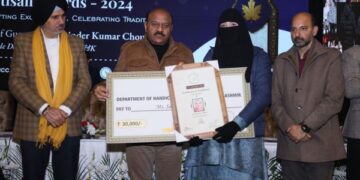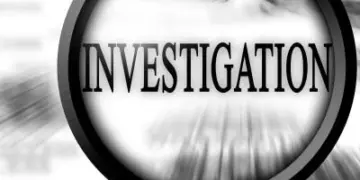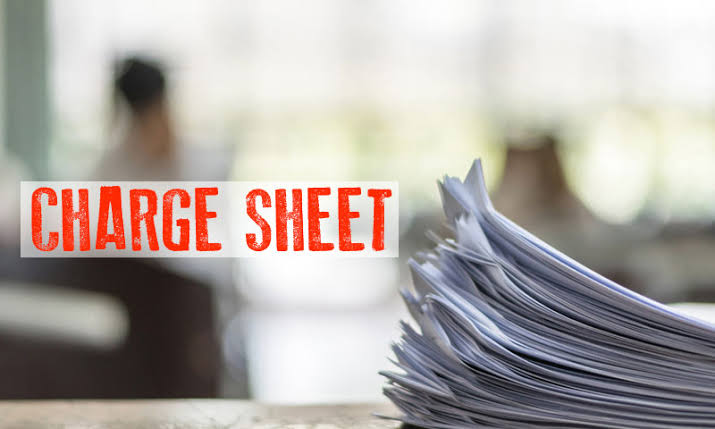New Delhi: Chief Minister Omar Abdullah on Monday said J&K has again “turned the corner” to become a pre-eminent destination, even as he pitched for choosing the path of “value-based tourism” instead of chasing volumes.
Addressing an event here, the National Conference leader also flagged the high air fares for Srinagar-bound domestic flights, especially if booked a day or two before travel, saying he hoped the new Vande Bharat train connecting Jammu with Srinagar, which is expected to be flagged off soon by Prime Minister Narendra Modi, will bring some relief for the travellers.
The event — ICC Aviation & Tourism Conference 2025 — was hosted by the Indian Chamber of Commerce.
Abdullah said the beauty of Jammu and Kashmir has beckoned tourists for a long period of time, even before the Valley came under the shadow of terror and violence.
“Tourism is something that Jammu and Kashmir is famous for. Long before we became famous for our troubles, we were famous for the beauty of Jammu and Kashmir, and for the tourism of Jammu and Kashmir. And this beauty is not something that is talked about in recent times,” Abdullah said.
He illustrated his point by citing a famous couplet inscribed on a wall of the Red Fort that describes Kashmir as a “heaven on earth”.
“These words were written centuries ago. From then to now, Jammu and Kashmir has attracted attention largely for good, but in recent years, somewhat for the bad as well,” the chief minister said.
“But, I can safely say that we have turned the corner, and Jammu and Kashmir today has once again become a pre-eminent destination for tourism in the country, increasingly for overseas tourists as well,” he said.
In his address, Abdullah also pitched for Jammu and Kashmir tourism to choose value over volume, and urged all the stakeholders to endeavour to work towards ensuring that tourists feel like coming back to J&K after returning from there.
“It is my firm belief that Jammu and Kashmir now needs to reposition itself in terms of the tourist destination it wants to be… Today, I am increasingly of the view that we need to reposition Jammu and Kashmir, not as a destination for volume tourism, but as a destination for value tourism. We need to go up the value chain,” the chief minister said.
When Jammu and Kashmir was struggling with the aftereffects of violent attacks and terror, “for us, tourism was a visible sign of a move towards normalcy”, he said.
Increase in the number of tourists added to its economic activity, and also “gave us a sense that perhaps better days were ahead of us”, Abdullah said.
“And, therefore, we chased volumes, we went out and tried to get as many tourists as possible to visit Jammu and Kashmir, because the more the tourists, the more impact, and therefore it was a win-win for all of us,” the chief minister added.
Emphasising the importance of “value-based tourism”, he said, “We have in mind nine new destinations that we hope to get funded through multilateral agency funding, which we hope will ease some of the pressure on Gulmarg, Pahalgam and Sonmarg in the Valley, and also open up areas of Jammu hitherto undiscovered for tourism”.
Until the new destinations come up, the Valley that one sees today is pretty much “saturated”, Abdullah said citing instances of urban congestion that one tourism season kicks in the Valley.
“The moment the Tulip Garden is opened, Srinagar, to all intents and purposes, grinds to a halt. A journey that in winter will take about 15 minutes, in April-May can take anything up to 2.5-3 hours, simply because of the volume of tourists,” he said.
Later, answering the queries of some of the participants including K B Kachru, Chairman Emeritus and Principal Advisor, South Asia for the Radisson Hotel Group, Abdullah said his government has already worked on these nine destinations.
“Before we open those destinations to private investment like yours (Radisson) in the hotel industry and other things, we need to make sure that the amenities are in place, including connectivity, electricity, water, etc. And that is where the multilateral funding comes in that I talked about,” he said.
The chief minister said the World Bank has already agreed to fund the project report preparation. “So that now will kick off and the moment that is done, we are then going to approach the same agencies. Hopefully, the World Bank will put aside its traditional sort of reluctance to fund anything in J&K.”
He said it is about Rs 5,500 crore investment that the J&K government is looking at for raising the basic infrastructure at these nine destinations.
“The moment that starts, then parallel to that, we will be asking people like you to come forward and invest in hotels and other tourism related infrastructure,” the chief minister said.
Abdullah said his government is going to work with tourism bodies and others to see how “we can move Jammu and Kashmir up the value chain in terms of tourism that is not so much volume-based”.
“As it is value-based and for that obviously the experience has to improve the quality of what we provide our tourists has to get better in terms of hotels, in terms of the experiences that we provide and in terms of the feel-good factor that they have when they come back. What we need to try and ensure is that tourists leave Jammu and Kashmir with a sense that they want to come back,” he said.
Admitting that the government has not been able to grow tourism in Jammu, he said even though one crore pilgrims come for ‘darshan’ of Mata Vaishno Devi annually, “you need to divert 10-15 percent of them to other pilgrimage sites and destinations”.
Tourism in Jammu region is unique, the chief minister said, adding Jammu’s positioning needs to be built around its heritage, around its history, around the religious side of it and the border part of it.
“And that is something which is going to get focused attention. All nine proposed destinations are not in the valley. Part of these are in the valley and part in Jammu,” he said.
Highlighting the exorbitant rates of air tickets to and fro Kashmir valley, he said PM Modi is visiting the UT to flag off the Vande Bharat train that will connect Jammu to Srinagar, thus integrating the rail network of the valley with the rest of the country.
“Therein again that will bring its own challenges linked to what I had said earlier. Rail normally means volume. The easy availability of access into the valley means volumes will go up. So how do we balance the increased volumes on account of the train with our need to move up the value chain and make tourism in Jammu and Kashmir more value-based,” he said.
The chief minister said his government will have focused attention on electric vehicles and is also open to helicopter service to link tourist destinations.
“We are open (to introduce helicopter services). If anyone is interested, by all means, come forward. Currently, all we have is the subsidized service for local people in the winter to connect the disconnected areas,” he said.
On the introduction of more cable car services, he said “we need to be selective and careful as to where we locate them, so that they actually survive and make money, rather than sort of disappear.”







